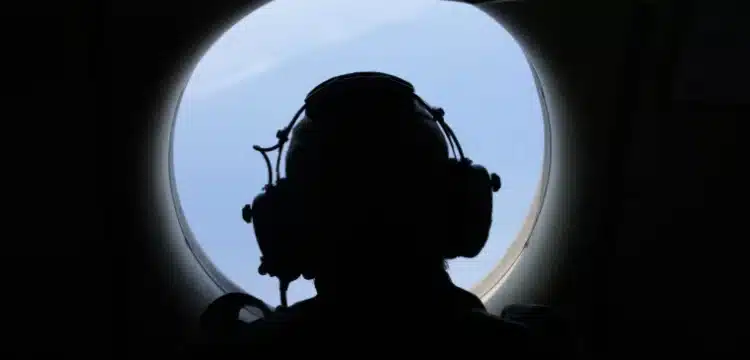[vc_row][vc_column][vc_column_text dp_text_size=”size-4″]Since the Titan submarine was officially lost in the Atlantic last week, planes have been scouring the seas for it beneath the waves.
The US Coast Guard said on Wednesday that a Canadian P-3 aircraft had discovered strange underwater noises, possibly slamming at half-hour intervals. According to officials, the signal is still being studied and analysed.
How can an aircraft flying high above the waves detect anything so far below the surface?
Traditionally, hunting for submersibles has been the sole responsibility of some of the largest and most technologically equipped aircraft in any air force. These robots, which are frequently based on civilian designs, use a set of impressive-sounding sensors to find military submarines beneath the sea. It’s frequently a game of cat and mouse between aircraft and submarines that wish to remain undetected. This is not the case.
The fact that these airborne hunters are armed with cutting-edge technological equipment appears to give them an advantage. However, as the lost Titan sub demonstrates, submersibles remain extremely difficult to locate, particularly at depths of 3.8km (12,400ft) where the Titanic’s wreck is discovered.

The P-3 Orion, a four-engine turboprop based on the Lockheed Electra aircraft, first flew in 1962 and was the source of the odd pounding noise on Wednesday.
The aeroplane noticed the noise after dropping sonar buoys on the surface, which were listening for sounds that nature would not create. It detected a steady hammering noise at 30-minute intervals, which experts believe is a clue that it was generated by humans.
Also Read: Debris found during search for missing Titanic sub.
“The fact that the acoustic noises are 30 minutes apart is a great sign,” says Jamie Pringle, a forensic geosciences reader at Keele University in the United Kingdom. “A continuous propellor for a surface ship.” Acoustic noise travels a long distance in water, which is both good and terrible. To triangulate the sound source and establish a position fix, you’d need (at least) three of those static buoys.
Magnetic anomaly detectors aboard the Lockheed P-3 Orion detect minuscule perturbations in the Earth’s magnetic field induced by metallic submarine hulls. If a plane outfitted with the detectors flies over a significant quantity of metal within its detection range, it will detect it. The presence of a known debris of a huge steel-hulled vessel, such as the Titanic, complicates the use of this technique.
The P-3, however, is not the only plane engaging in the search. Other planes patrolling the Atlantic include the C-130 Hercules and the relatively new Boeing P-8 Poseidon, which is known as the world’s most advanced maritime patrol vessel.

The Poseidon appears familiar because it is based on the Boeing 737 passenger airliner. The Poseidon has a substantially lesser range than the P-3: 2,250 km (1,400 miles) against 9,000 km (5,600 miles). It can, however, fly 12,000 feet (3,660 metres) higher and faster.
The Poseidon’s aircrew utilises a grid pattern to figure out where a submersible isn’t and then closes in on where it may be, much like a game of Battleships. It accomplishes this by employing one of the most powerful methods of submarine tracking: sonobuoy fields. Air parachuted Multistatic Active Coherent (Mac) buoys, which are launched from a rotary launcher at a high altitude, create many sonar pulses over time in order to last longer and improve their search area. One of the most closely guarded secrets of anti-submarine warfare is the placement of buoys like these. A single P-8 may launch up to 120 buoys.

The Poseidon, however, flies too high to detect magnetic anomalies properly, thus UAVs (Unmanned Aerial Vehicles) outfitted with these detectors are being designed to deploy from its sonobuoy tubes.
What hasn’t changed is the reliance on old-fashioned intelligence in even the most cutting-edge aircraft. “To be most effective, the P-8 needs to first have a rough sense of the location and direction of the submarine to find it,” explains Sidharth Kaushal, a research fellow at the Royal United Services Institute (RUSI), a UK defence and security think tank. This “rough sense” in a military search is based on intelligence acquired via signals, satellite photos, interpersonal contact, and an ever-expanding network of hydrophones installed on the ocean floor, typically at “choke points,” to detect when submersibles pass over them. However, in the case of the missing Titan submarine, such signs are few and far between.
One of the most important capabilities of the Poseidon, and one that distinguishes it from the Orion, is its ability to act as a communications hub, or “node,” at the centre of a network of ships, sensor-equipped UAVs, and Uncrewed Surface Vessels (USV) that will effectively multiply its power.
Some observers believe that the arrival of aircraft like the Poseidon heralds a new era in which the sea will become “transparent,” making it impossible for submarines to hide.
But, while the Orion’s and now the Poseidon’s technologies and powers appear to give them an advantage, they are not without restrictions.
Sonar pulses, for example, can be interfered with by differing temperature and salinity layers in the water. A submersible can be hidden beneath these. Magnetic detection system has a limited range, detecting only submersibles close to the surface and near the aircraft’s position. Submersibles can potentially evade detection by remaining hidden in the “ambient water noise” of the ocean.
The P-8 may be the most advanced sub-hunter in the world. However, as H I Sutton, an independent defence analyst, told the BBC, “systems like Poseidon will still need to know where to look.”
In reality, locating a submersible can also be a matter of chance. After all, it was the 60-year-old P-3 Orion who identified the fringe that could be emanating from the missing Titan.[/vc_column_text][/vc_column][/vc_row]











